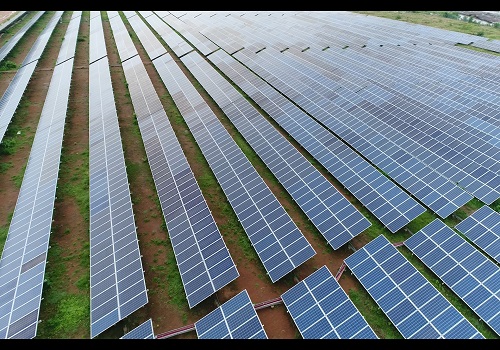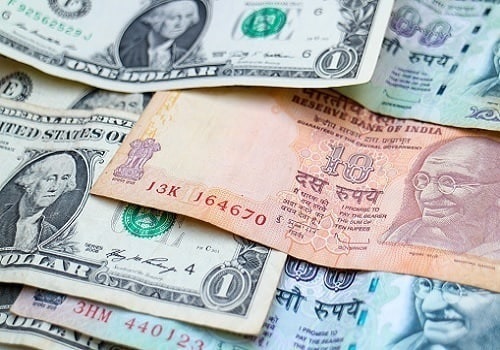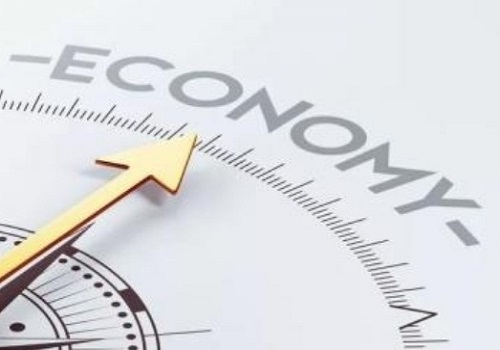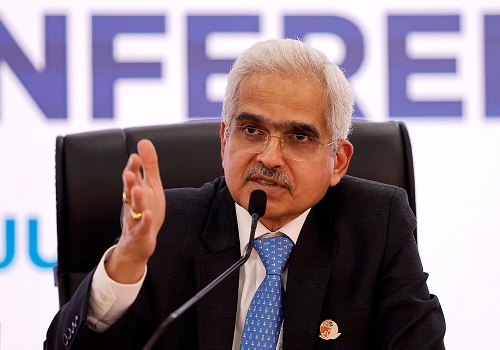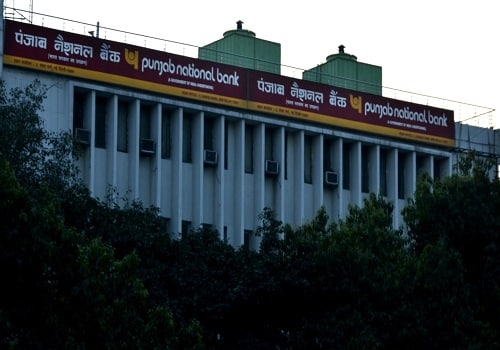Turmeric trading range for the day is 13082-15050 - Kedia Advisory

Follow us Now on Telegram ! Get daily 10 - 12 important updates on Business, Finance and Investment. Join our Telegram Channel
Gold
Gold prices tumbled by 2.97% to close at Rs.75,311, as profit-taking dominated investor sentiment, fueled by a shift toward riskier assets. The market reacted to Donald Trump’s nomination of Scott Bessent as U.S. Treasury head, whose policy focus on tax cuts and maintaining the dollar's reserve status added optimism. Reports of a potential ceasefire between Israel and Hezbollah further boosted confidence in risk assets, dampening gold’s appeal as a safe haven. On the macroeconomic front, markets are anticipating the U.S. Fed's November meeting minutes and PCE inflation data for interest rate direction. Currently, the probability of a 25bps rate cut in December has dropped to 56% from 62% last week. Gold demand in India weakened as rising prices deterred jewellers and retail buyers, with premiums falling to $3/oz from $16/oz last week. In China, premiums ranged from $10/oz to a discount of $6/oz. Globally, the World Gold Council (WGC) reported steady year-on-year demand of 1,176.5 metric tons in Q3 2024, with robust investment activity offsetting weaker jewellery consumption and slower central bank purchases. Notably, physically-backed gold ETFs saw inflows of 95 tons, marking the first positive quarter since Q1 2022. The market witnessed long liquidation, as open interest dropped significantly by 24.71% to settle at 4,814 contracts. Support is now seen at Rs.74,650, with further downside potential to Rs.73,995. Resistance is at Rs.76,480, and a move above this level could push prices toward Rs.77,655.
Trading Ideas:
* Gold trading range for the day is 73995-77655.
* Gold fell after Donald Trump's nominated hedge fund manager Scott Bessent to lead the U.S. Treasury.
* CNN: Israel's PM Netanyahu approves Lebanon ceasefire deal in principle
* Investors await the Fed's November meeting minutes and PCE inflation data to assess the outlook for US interest rates.
Silver
Silver prices dropped by 3.38% to close at Rs.87,699, as waning geopolitical tensions and reduced safe-haven demand pressured the metal. The nomination of hedge fund manager Scott Bessent as U.S. Treasury Secretary by President-elect Donald Trump eased market uncertainty, with Bessent’s prioritization of stability signaling less immediate disruption. Reports of a potential ceasefire agreement between Israel and Hezbollah further dampened silver's safe-haven appeal. On the supply-demand side, the Silver Institute projects a 4% reduction in the global silver deficit to 182 million ounces in 2024. Record industrial demand, a recovery in jewellery consumption, and rising demand from solar and electronics sectors will lift total demand by 1% to 1.21 billion ounces. However, a 16% drop in physical investment and a 5% rise in recycling, coupled with higher mine output in Mexico, Chile, and the U.S., are expected to balance the market. India, the world's largest silver consumer, has nearly doubled imports, reaching 4,554 metric tons in H1 2024 from 560 metric tons a year ago, driven by strong industrial and investment demand. Silver faced long liquidation, with open interest declining by 14.58% to 14,721 contracts. Prices are finding support at Rs.86,715, with further downside potential to Rs.85,730. Resistance is pegged at Rs.89,510, and a break above this level could see prices testing Rs.91,320. Elevated industrial demand and speculative buying may lend support to prices in the medium term.
Trading Ideas:
* Silver trading range for the day is 85730-91320.
* Silver prices dropped as safe-haven demand waned after Donald Trump nominated hedge fund manager Scott Bessent as Treasury Secretary.
* Israel and Hezbollah are nearing a ceasefire agreement, easing geopolitical tensions in the Middle East.
* The Chicago Federal Reserve president reiterated his support for further U.S. interest rate cuts.
Crude oil
Crude oil prices fell by 3.35% to close at Rs.5,826, driven by easing geopolitical concerns after reports suggested progress towards a ceasefire between Israel and Hezbollah. While optimism grew around conflict resolution, Lebanese officials remained cautious, expressing skepticism over Israeli commitments. In addition, rising U.S. crude inventories and weaker global demand forecasts exerted further pressure on prices. Saudi Arabia's crude exports reached a three-month high of 5.751 million bpd in September, despite a slight dip in production to 8.975 million bpd. However, OPEC’s revised forecast for slower global oil demand growth in 2024 and the International Energy Agency's (IEA) projection of oversupply in 2025 added bearish sentiment. U.S. crude inventories rose by 0.545 million barrels last week, surpassing expectations, while gasoline stocks increased by 2.054 million barrels, highlighting ample supply. Distillate stocks, however, posted a minor decline of 0.114 million barrels. The EIA's Short-Term Energy Outlook underscored weakening demand growth, revising global oil demand estimates to 1.2 million bpd for 2024, about 300,000 bpd lower than prior forecasts. U.S. oil production is expected to rise to 13.22 million bpd in 2024 but at a slower pace than earlier anticipated. Crude oil faced long liquidation, with open interest dropping by 7.43% to 10,828 contracts. Prices find support at Rs.5,752, with further downside potential to Rs.5,678. Resistance is seen at Rs.5,959, and a move above this level could drive prices towards Rs.6,092.
Trading Ideas:
* Crudeoil trading range for the day is 5678-6092.
* Crude oil prices fell after reports that Israel and Lebanon had agreed to ceasefire.
* The OPEC+ meeting on December 1 is marked to be pivotal as a delay in production normalization is expected.
* Russia's Novak says oil market balanced thanks to OPEC+
Natural gas
Natural gas prices surged 4.95% to Rs.292.5 as forecasts of colder weather and declining production sparked buying activity. The U.S. Energy Information Administration (EIA) reported a rare early-season draw of 3 billion cubic feet (bcf) from storage for the week ending November 15th, contrasting with market expectations of a 5 bcf build. This decline marks the start of the withdrawal season, driven by increased heating demand and reduced output due to earlier low prices. Production in the Lower 48 states averaged 101.0 bcf per day in November, down from October's 101.1 bcf and well below the record 105.3 bcf set in December 2023. However, daily production has recently risen to an 11-week high of 102.8 bcf. Weather forecasts indicate colder-than-normal conditions starting November 28, pushing projected demand from 108.0 bcf this week to 116.5 bcf next week and 133.9 bcf in early December. Additionally, LNG feed gas flows climbed to 13.5 bcf per day in November, nearing the record 14.7 bcf seen in December 2023, as supply concerns in Europe support U.S. LNG exports. The EIA’s Short-Term Energy Outlook anticipates 2024 production to ease to 103.3 bcf per day, with domestic gas consumption reaching a record 90.0 bcf per day. Despite higher stocks, which are 3.7% above last year and 6.4% above the five-year average, colder weather and rising demand are tightening supply. Natural gas witnessed fresh buying, with open interest rising by 4.78% to 15,401 contracts. Prices find support at Rs.287.1, with a further dip to Rs.281.7 possible. Resistance is seen at Rs.299.4, and a move above this level could test Rs.306.3.
Trading Ideas:
* Naturalgas trading range for the day is 281.7-306.3.
* Natural gas rose amid forecasts of colder weather and lower production.
* Data from the EIA showed that gas storage fell by 3 billion cubic feet
* Additionally, supply concerns in Europe ahead of the turn of the year drove LNG feed gas flows to rise to a 10-month high.
Copper
Copper prices edged up by 0.24% to Rs.807.3 as a weaker U.S. dollar provided support, coupled with optimism around China's seasonal demand. However, a lack of additional monetary support from the People’s Bank of China kept broader market sentiment cautious. On the supply side, global copper inventories continued to shrink, reflecting steady consumption. Notably, SHFE copper stocks fell to 130,465 tons, the lowest since February, indicating stronger physical demand during China’s peak consumption season. Global production and consumption trends added mixed signals. The International Copper Study Group (ICSG) reported a deficit of 131,000 metric tons in the refined copper market for September, following a surplus of 43,000 tons in August. Cumulatively for 2024, the market shows a surplus of 359,000 tons, indicating that earlier oversupply concerns persist. On the production side, Peru’s copper output declined by 1.2% year-on-year in September to 232,423 metric tons. China's role in the market remains pivotal. Refined copper imports rose by 1.1% year-on-year in October to 506,000 metric tons, supported by declining domestic inventories and robust seasonal demand. Copper concentrate imports also rose by 0.2% in October, reflecting China's efforts to sustain industrial growth amid slowing manufacturing momentum. The copper market saw fresh buying interest, with open interest rising by 7% to 8,054 contracts. Prices find support at Rs.805.1, with a potential test of Rs.803 if breached. Resistance is seen at Rs.810.4, and a move above could lead prices toward Rs.813.6.
Trading Ideas:
* Copper trading range for the day is 803-813.6.
* Copper climbed as the US dollar weakened following President-elect Donald Trump’s nomination of Scott Bessent for Treasury Secretary.
* PBOC held key lending rates steady, providing no additional monetary support that markets had hoped for to stimulate the economy.
* Global copper inventories continued to decline amid stronger consumption.
Zinc
Zinc prices rose by 0.75% to Rs.280.5, driven by increased risk appetite following Scott Bessent’s nomination as U.S. Treasury Secretary and bargain hunting after recent declines. However, Eurozone economic data showed persistent contraction in the services sector and deepening recession in manufacturing, highlighting broader economic challenges. On the inventory front, the Shanghai Bonded Zone zinc ingot inventory rose to 10,500 mt, up 500 mt week-on-week, as imported zinc ingots previously locked flowed into the market. Meanwhile, total zinc ingot inventory across seven major regions in China declined by 8,700 mt from November 14 to 118,700 mt, reflecting subdued arrivals in key regions such as Shanghai, Guangdong, and Tianjin. Globally, the zinc market deficit narrowed to 79,500 metric tons in September from 85,000 tons in August, according to the ILZSG. Year-to-date, a global deficit of 8,000 tons contrasts with a surplus of 358,000 tons during the same period last year. In China, refined zinc production rose by over 2% month-on-month in September, driven by recovery from maintenance in smelters across multiple regions. This growth trend is expected to continue in October, albeit at a slower pace, with expansions primarily in Inner Mongolia, Shaanxi, and Hunan. The market saw fresh buying interest as open interest surged by 8.45% to 2,504 contracts. Zinc prices are supported at Rs.278.6, with further downside likely to test Rs.276.6 if breached. Resistance is now at ?282.1, and a move above this level could push prices toward Rs.283.6.
Trading Ideas:
* Zinc trading range for the day is 276.6-283.6.
* Zinc gains buoyed by bargain hunting and increased risk appetite.
* The global zinc market deficit edged down to 79,500 metric tons in September from 85,000 tons in August - ILZSG
* Shanghai bonded zone zinc ingot inventory was 10,500 mt, up 500 mt WoW.
Aluminium
Aluminium prices rose by 0.31% to Rs.244.7, supported by news of Russian producer Rusal cutting output by over 6% or 250,000 metric tons annually. This decision comes as a response to high alumina costs stemming from disruptions in bauxite supplies from Guinea and Brazil and production halts in Australia. In China, October's aluminium output increased 1.6% year-on-year to 3.72 million metric tons, driven by strong demand and favorable prices offsetting elevated raw material costs. Year-to-date production rose 4.3% to 36.39 million tons. Alumina production in October also surged 5.4% year-on-year to 7.4 million tons, while primary aluminium and aluminium alloy outputs grew by 1.6% and 9% respectively. For the first ten months of 2024, China’s alumina and aluminium alloy outputs expanded by 2.9% and 8.7% year-on-year, signaling robust industrial activity. On the export front, China's shipments of unwrought aluminium and related products rose sharply, totaling 5.5 million tons in the first ten months, up 17% year-on-year. October exports alone increased 31% year-on-year to 577,000 tons, highlighting strong international demand for Chinese aluminium. The aluminium market witnessed fresh buying, with open interest rising by 10.29% to settle at 3,495 contracts. Support is seen at Rs.243.4, and a break below could test Rs.241.9. Resistance is positioned at Rs.246.6, with further upside potentially leading to Rs.248.3.
Trading Ideas:
* Aluminium trading range for the day is 241.9-248.3.
* Aluminium gains as Russian aluminium producer Rusal will cut output by more than 6%.
* Global aluminium output rises 1.3% year on year in October
* Aluminium stocks at Japanese ports fell to 311,400 metric tons by the end of October, down about 0.5% from the previous month.
Cotton candy
Cotton candy prices rose by 0.68% to settle at Rs.56,200, supported by concerns over declining production and supply constraints. India's cotton output for the 2024/25 season is projected to drop by 7.4% to 30.2 million bales, attributed to reduced acreage and damage from excessive rainfall. USDA further reduced India’s production forecast to 30.72 million bales, lowering ending stocks to 12.38 million bales. Acreage has fallen by 9%, with the planted area decreasing to 11.29 million hectares from 12.69 million hectares last year. Farmers in Gujarat have shifted focus to groundnuts, which offer better returns. India’s cotton imports are likely to rise to 2.5 million bales from 1.75 million bales a year ago, while exports are expected to decline to 1.8 million bales from 2.85 million bales, according to the Cotton Association of India (CAI). Demand, however, remains steady at 31.3 million bales. Globally, the USDA raised cotton production estimates by over 200,000 bales due to increases in China, Brazil, and Argentina, offsetting declines in the U.S. and Spain. The U.S. cotton balance sheet reflected reduced production, mill use, and exports, with ending stocks raised slightly to 4.1 million bales. The market witnessed fresh buying with a 17.01% rise in open interest, settling at 227 contracts. Prices are supported at Rs.55,960, with the next test likely at Rs.55,730. Resistance is at Rs.56,360, and a move above this could push prices to Rs.56,530. The outlook remains positive amid tight supply expectations.
Trading Ideas:
* Cottoncandy trading range for the day is 55730-56530.
* Cotton gains as India's cotton production in 2024/25 is likely to fall by 7.4% from a year ago to 30.2 million bales
* However upside seen limited as yarn markets face weak demand and payment constraints.
* Cotton production is projected to increase in China, Brazil, and Argentina, more than offsetting reductions in the US and Spain – USDA
* In Rajkot, a major spot market, the price ended at 26057.8 Rupees gained by 0.16 percent.
Turmeric
Turmeric prices fell by -3.91% to settle at Rs.13,806, pressured by weak demand and rising arrivals. Market sentiment turned bearish as the estimated acreage for the upcoming season is projected to be 30-35% higher than last year, pointing to a significant increase in production. However, the downside remained limited due to reports of crop damage from heavy rains, suggesting potential production losses. Favorable weather conditions, with dry spells followed by light rains in turmeric-growing regions like Vidarbha and Telangana, have supported crop growth. India's turmeric sowing for 2024 is estimated to rise significantly, with Maharashtra, Telangana, and Andhra Pradesh seeing a 30-35% increase in acreage. Despite this, the total availability in 2025 might fall short of consumption due to depleted carryover stocks. Production in 2024 was pegged at 45-50 lakh bags compared to 80-85 lakh bags in 2023, while exports rose marginally by 0.96% year-on-year during Apr-Sep 2024 to 92,911.46 tonnes. Imports surged by 184.73% during the same period, driven by domestic supply concerns. In Sep 2024, turmeric exports totaled 15,326.76 tonnes, a significant 68.69% increase from the same month in 2023. Imports for the month rose by 33.92% from Aug 2024 but were down 28.46% from Sep 2023. In the Nizamabad spot market, turmeric prices gained by 0.78% to end at Rs.14,281.95. Turmeric futures saw long liquidation with open interest dropping by -12.67% to 9,095 contracts. Prices are finding support at 13,444, with further downside testing Rs.13,082. Resistance is seen at Rs.14,428, and a move above this level could push prices towards Rs.15,050.
Trading Ideas:
* Turmeric trading range for the day is 13082-15050.
* Turmeric prices dropped due to lower demand amid a rise in arrivals.
* The expected acreage for the upcoming season is estimated to be 30-35% higher than last year.
* Recent weather conditions, which include dry weather followed by light rains, are benefiting crop growth.
* In Nizamabad, a major spot market, the price ended at 14281.95 Rupees gained by 0.78 percent.
Jeera
Jeera prices gained by 0.24% to settle at Rs.25,085, supported by short covering after recent declines triggered by increased arrivals. On average, Unjha, a key market, is witnessing daily arrivals of 15,000 bags, while farmers are estimated to hold around 35% of this season’s stock. The carryover stock for the new season stands at an estimated 20 lakh bags. Export prospects are improving post-Diwali, with expectations of increased demand in November-December. Cumin production is forecasted to decline by 10%, and acreage in Rajasthan may see a 10-15% drop. Indian cumin remains the most affordable globally, priced at $3,050 per tonne, compared to $200-250 higher rates for Chinese cumin. This price advantage is expected to attract countries like China, bolstering export demand. Heightened geopolitical tensions in the Middle East over the past months have driven robust export demand from Gujarat. As per FISS data, cumin exports during July-September 2024 surged 128% year-on-year to 52,022 metric tonnes. Total exports for Apr-Sep 2024 jumped by 70.02% to 119,249.51 tonnes compared to the same period last year. Notably, September exports rose 162.34% year-on-year, indicating strong international demand ahead of festive seasons. The market witnessed fresh buying, with open interest increasing by 0.27% to 2,268 contracts. Prices are supported at Rs.24,850, with further downside possible to Rs.24,610. Resistance is pegged at Rs.25,240, and a break above this could push prices towards Rs.25,390.
Trading Ideas:
* Jeera trading range for the day is 24610-25390.
* Jeera gained on short covering after prices dropped as arrival has increased.
* There is a possibility of 25 percent reduction in cumin sowing in Gujarat
* Carryover stock of 20 lakh bags of cumin is estimated in the new season
* In Unjha, a major spot market, the price ended at 24976.55 Rupees dropped by -0.12 percent.
Views express by all participants are for information & academic purpose only. Kindly read disclaimer before referring below views



